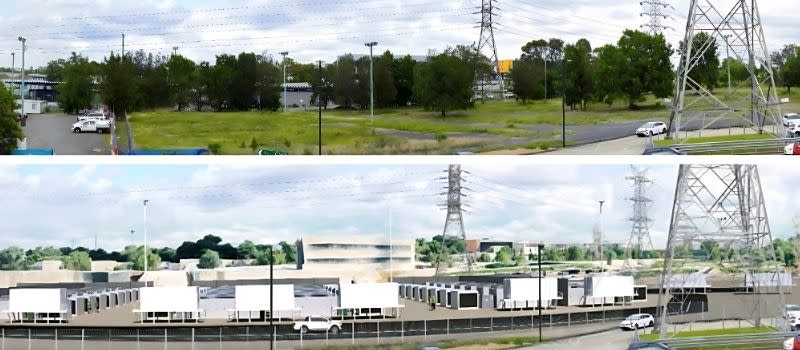Ausgrid’s $423m Battery Play Hits the Grid

Electricity distributor Ausgrid plans to build $423 million worth of grid-scale battery systems across two NSW sites, capable of powering 54,000 homes.
The state significant developments—both on public exhibition—propose installations at Homebush in Sydney’s inner west and Mayfield West in the Hunter region.
Each project would deliver up to 200MW of power with 400MW/h of energy storage, using containerised lithium-ion batteries—likely Tesla Megapacks—connected to existing substations via underground cabling.
The $215-million Homebush system would occupy a 26,500sq m disused carpark beside Ausgrid’s Mason Park substation (pictured in rendering above), near the DFO shopping centre.
The $208-million Mayfield West project—Steel River East BESS—would be built on an overgrown site in the Steel River Industrial Estate.
Both sites are zoned for infrastructure and owned by Ausgrid, which is jointly held by the NSW Government, AustralianSuper and IFM Investors.
Planning documents for each project said the systems would “charge from the grid during periods of low demand and dispatch energy during times of high demand or grid stress”.
Ausgrid, the largest distributor on the east coast, said the batteries were intended to “reduce the need for new transmission infrastructure”, support greater uptake of rooftop solar and provide local construction jobs.
The projects are designed to align with the NSW Electricity Strategy and Infrastructure Roadmap, which support the transition from coal and towards more reliable, decentralised energy sources.

Together, they form part of a broader rollout across Ausgrid’s network, with a goal of delivering more than 1.5gW of distribution-connected storage by the early 2030s.
While construction on both may be staged, each application seeks approval for the full 200MW capacity.
The batteries would operate remotely and without permanent staff.
Noise barriers and landscaping are proposed to minimise impacts on surrounding areas.
At Homebush, 0.05ha of native vegetation is expected to be cleared, mostly along the site’s southern edge.
The design avoids neighbouring endangered ecological communities, including freshwater wetlands and swamp oak floodplain forest.
At Mayfield West, the Steel River site contains no protected fauna and is overgrown with invasive species such as lantana and bitou bush.

Ausgrid plans to retain some mature plantings along the site’s boundary and remediate contaminated soils from previous industrial use.
The nearest home is about 400m away.
The proposals are being assessed as State Significant Developments under the Environmental Planning and Assessment Act.
Homebush is on exhibition until July 17, Steel River East until June 30.
If approved, construction could begin at both sites in late 2025.
The rollout comes as NSW prepares for the staged retirement of its coal-fired power stations.
Origin Energy’s Eraring—the country’s largest—was originally due to close in 2025, but the NSW Government has underwritten its operation until at least August 2027, covering up to $225 million in annual losses.
The deal allows Eraring to remain open until April 2029, though an earlier shutdown is still possible.
In the Hunter region, AGL’s Liddell power station has closed, while nearby Bayswater remains in operation and is due to shut by 2033.
















